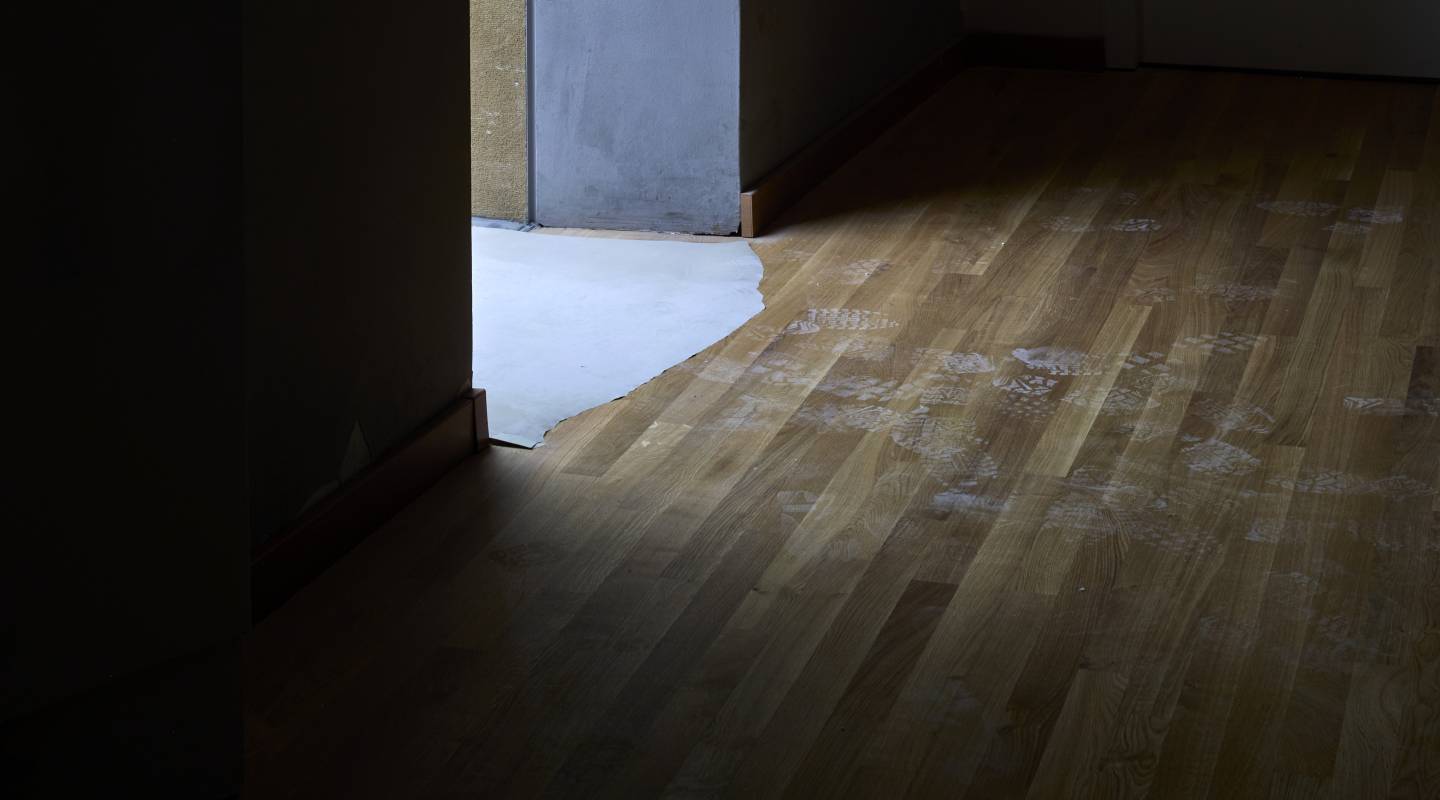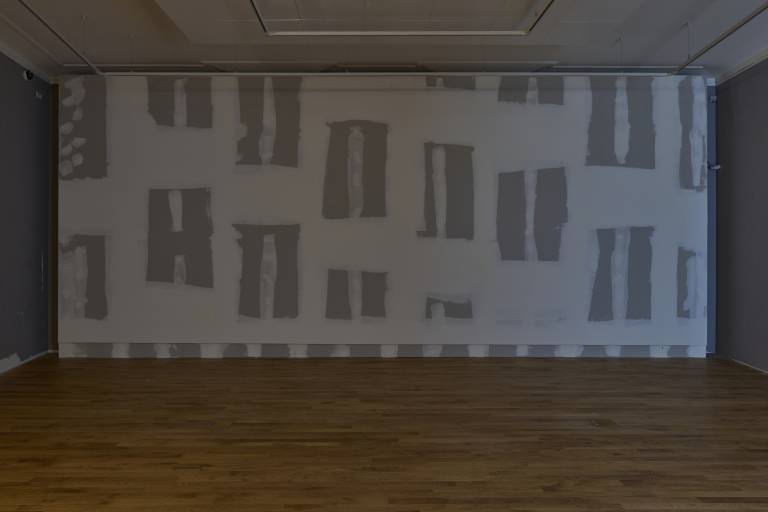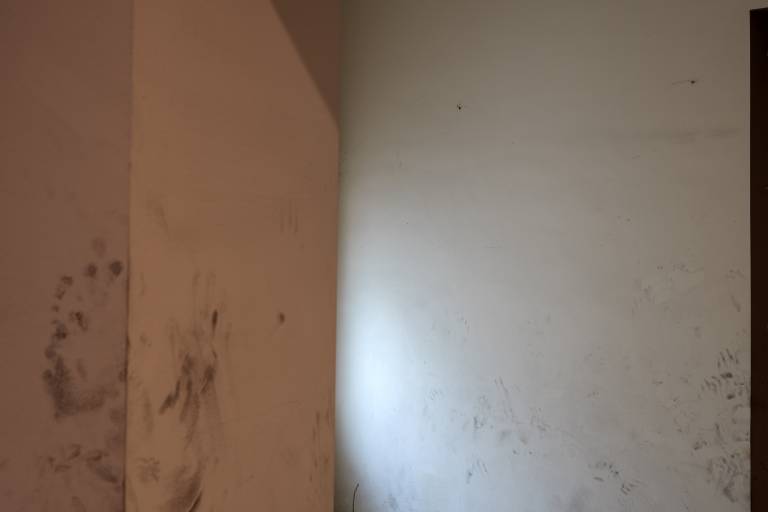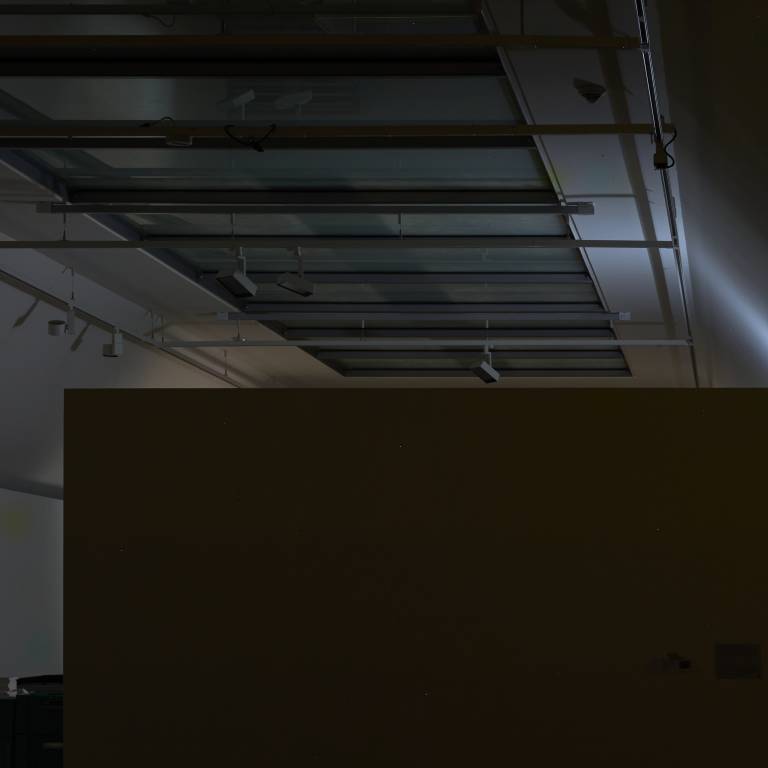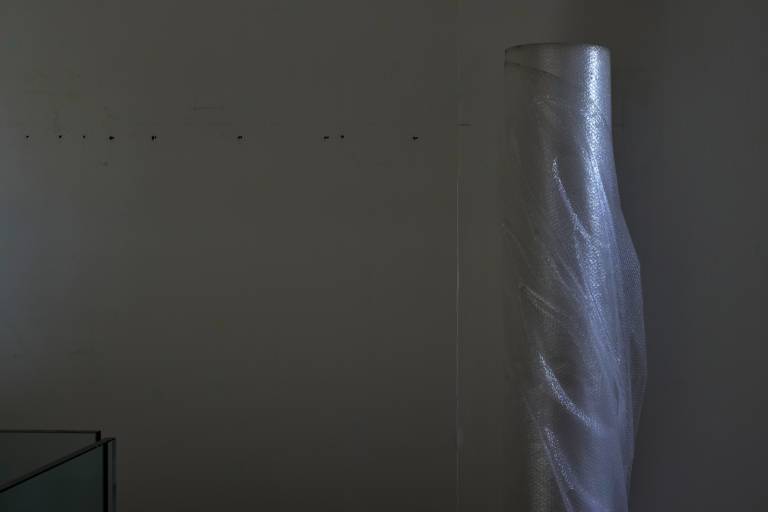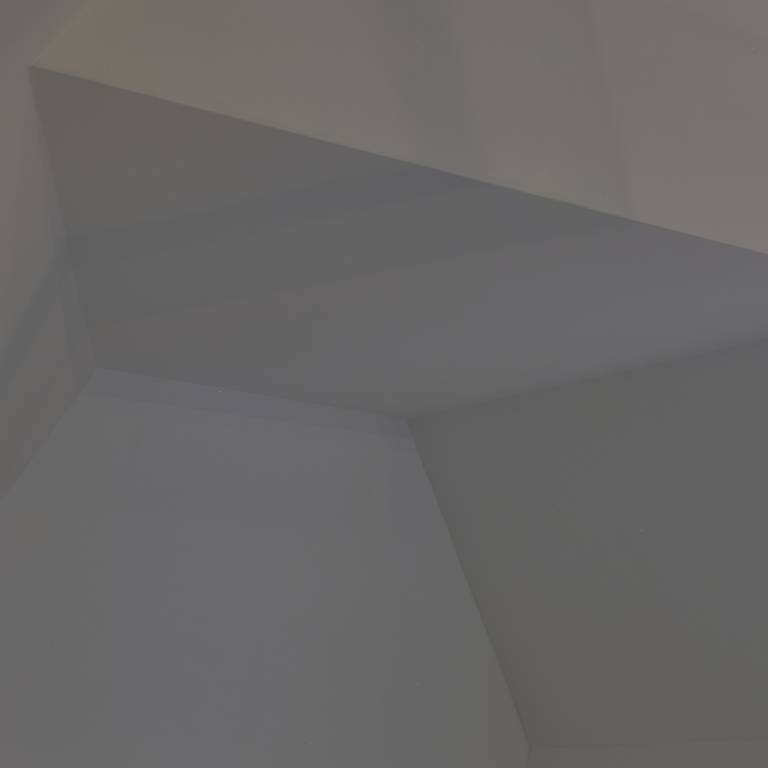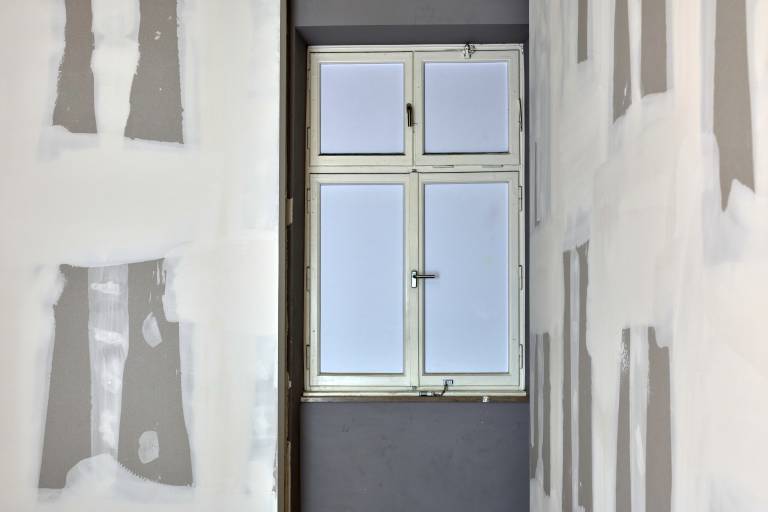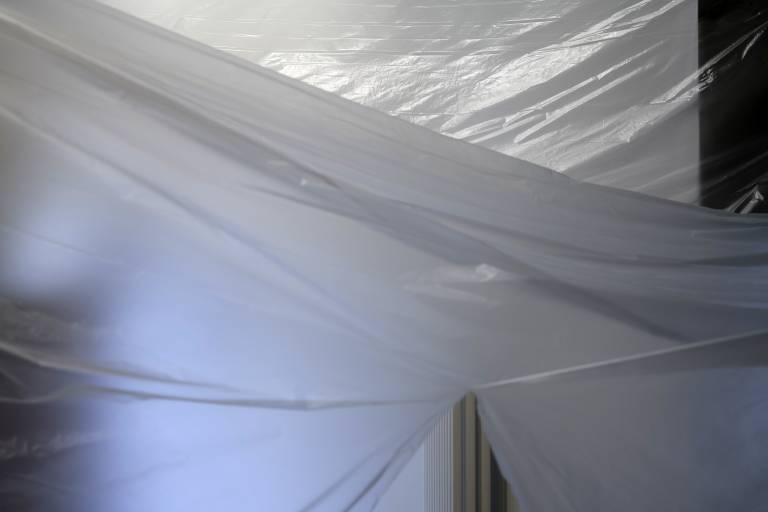As we prepare to reopen the permanent collection of modern and contemporary art on the fourth floor of the museum after several years of renovation works, we take a moment to reflect on what empty spaces in institutions like ours can mean and how artists have responded to them. Éric Chenal’s images capture the transient state of the rooms in question, offering a visual exploration of the notions considered in this piece.
As much as museums are known for their exhibitions, where curators transform spaces into rich experiences filled with artworks, objects, relics and historical documents, empty walls and unfinished floors are also part of the museum experience. Because our temporary exhibitions are just that – temporary.
Hidden behind no entry signs and plastic sheets, there is a whole world that visitors rarely get to see. In this liminal, in-between space inhabited by workers, curators and conservation experts, objects are carefully packed, walls are taken down or put up and layer upon layer of paint is applied in preparation for the next project, where the space is again filled with content, each exhibition an exercise in storytelling and worldbuilding.
Yet absence can be presence too. When it is emptied of objects, the framing device that is the exhibition space itself comes to the fore. It draws attention to what is otherwise invisible – the social institution behind the art on display, the architecture that shapes our perception. How does this space influence the way we see the works on show?
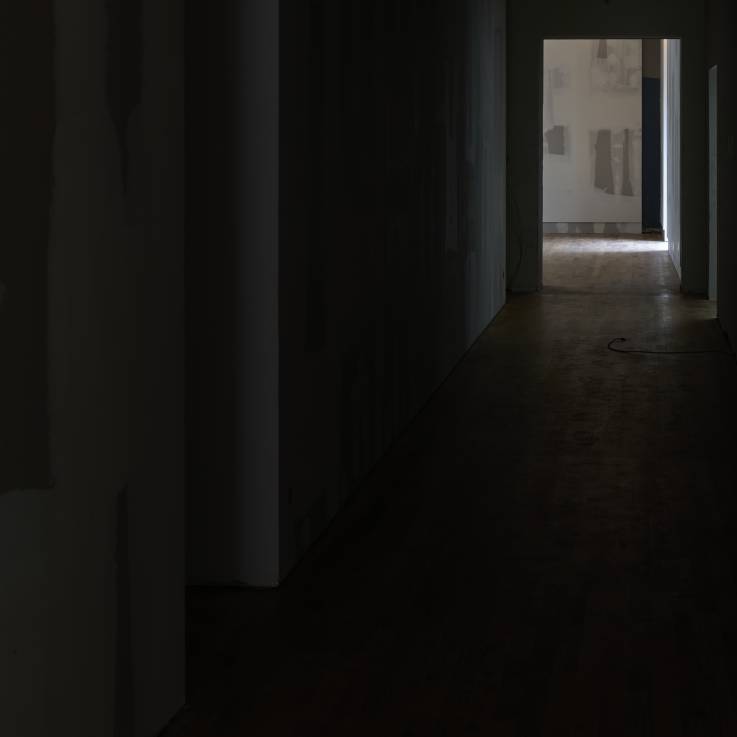
Absence as presence
Ilya and Emilia Kabakov address this in their installation The Empty Museum (1993); a replica of a gallery in a classical museum with burgundy walls, velveteen benches and pools of light on the walls where the paintings would normally hang. Bach’s famous organ piece Passacaglia plays in the background. By replicating the space of the museum, but stripping it of its main feature – its collection –, the artists draw attention to this institution’s inner workings, the apparatus behind the objects on display. The piece, thus, invites spectators to contemplate the status of the institutions we entrust to take care of and exhibit works of art.
Similarly, Satijn Panyigay finds presence in absence in her series Twilight Zone (2020-2022), where she documents the empty exhibition spaces of leading Dutch museums such as Boijmans Van Beuningen. “While photographing in those stimulifree rooms, I often experience feeling everything at once and nothing at all, at the same time. That’s what I want to capture.” Here, the museum is caught on camera as an object itself rather than as a backdrop for art. Panyigay calls upon the viewer to consider the effect these spaces have on them – and on their experience of art – by capturing them in their barest state.
Éric Chenal, too, engages with notions of emptiness and transience in projects like white inside (2013), where he photographs contemporary art spaces in between exhibitions. In the images accompanying this article, he explores the empty rooms of the museum’s fourth floor, paying particular attention to their architectural features and traces of human activity – a flurry of footsteps here, the hint of a handprint there. Devoid of their function as framing devices and sites of artistic creation, they gain new meaning as spaces that exist in and of themselves.
The notion of the void
As we have already established, an empty space isn’t necessarily a
neutral one. It can be politically charged and express power relations.
The decolonised museum, for instance, is often represented as an empty
museum. Because if what you see in a museum is largely determined by
people who have had power throughout history, what would be left if the
artifacts thus obtained were returned to their rightful owners?1
Emptying the museum of these objects provides an opportunity to create a
space no longer dominated by narratives of power. Instead of attempting
to fill the void, the museum becomes a site for alternative ways of
reflecting on history. Might an empty space be more powerful than a
filled one?
This is certainly the case with the countermonuments developed in
Germany to address the horrors of the Holocaust. Focusing on the notion
of the void, absence rather than presence, negation rather than
validation, these striking works reject the traditional function of
public monuments and their tendency to glorify the past. Instead, they
are structured around the idea of erasure and present the public with
deafening silence, because there are neither words nor images to express
the barbarity of the crimes committed against the Jewish people during
the Second World War. A well-known example is Jochen Gerz’s 2146 Steine – Mahnmal gegen Rassismus
(1993) in Saarbrücken, where the underside of the town square’s
cobblestones were engraved with the names of Jewish cemeteries and
replaced with the inscription facing downwards, conveying the neglect of
Germany’s past through a sense of rupture, fragmentation and
discontinuity.
Emptiness, thus, can convey powerful messages to the public and address difficult chapters in our history. Even when stripped of art and objects, the museum space still speaks to us in a variety of ways – we just have to listen.
Text: Katja Taylor - Images: Éric Chenal
Source: MuseoMag N°I 2024
1 The museum has taken active steps to document the provenance of and restitute objects from its collection, notably the Albert Spring Collection, part of which was on show in our exhibition on Luxembourg’s colonial past in 2022, and our ongoing research on the dispossession of Jewish people with relation to acquisitions made by the museum during the Second World War.
